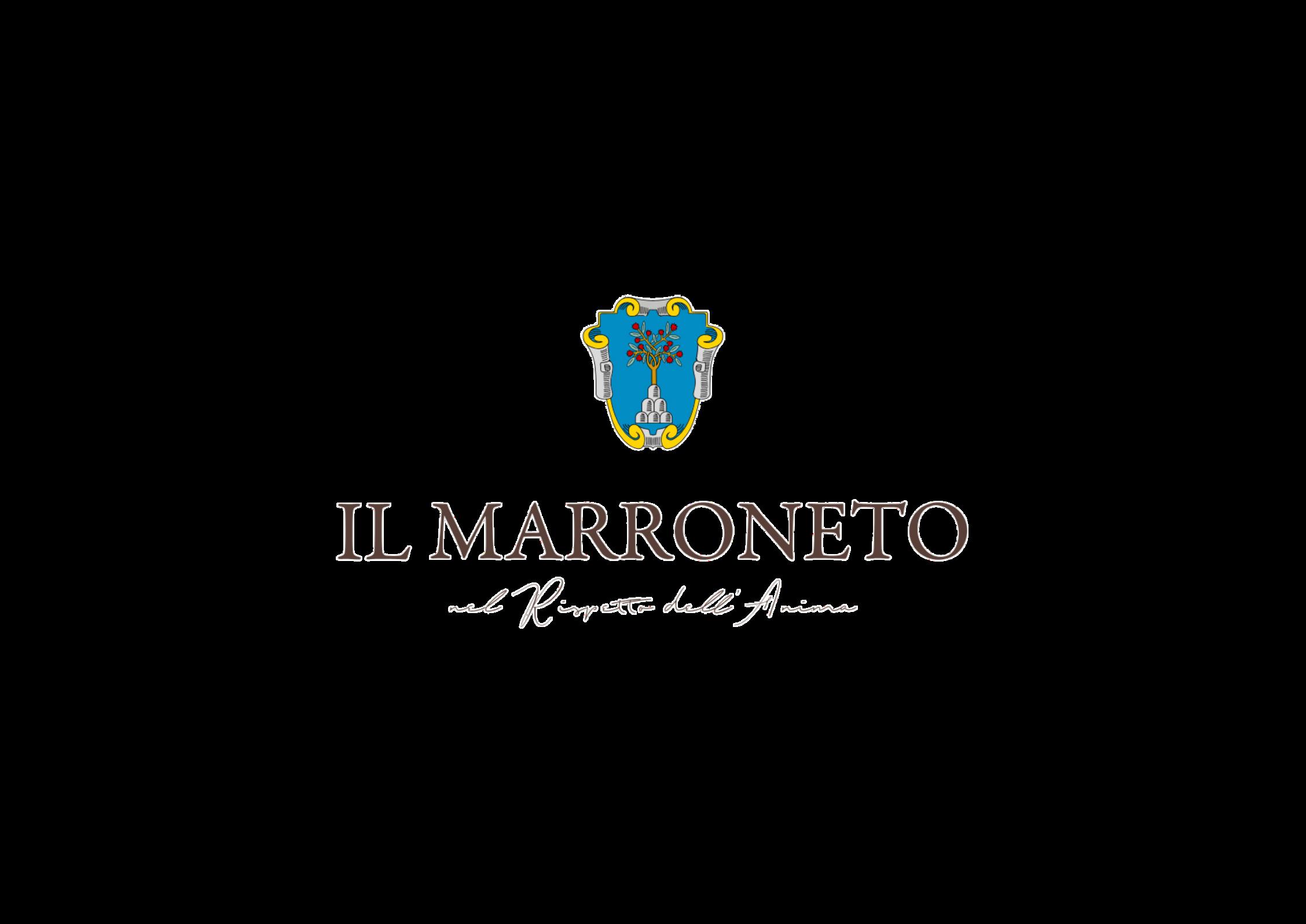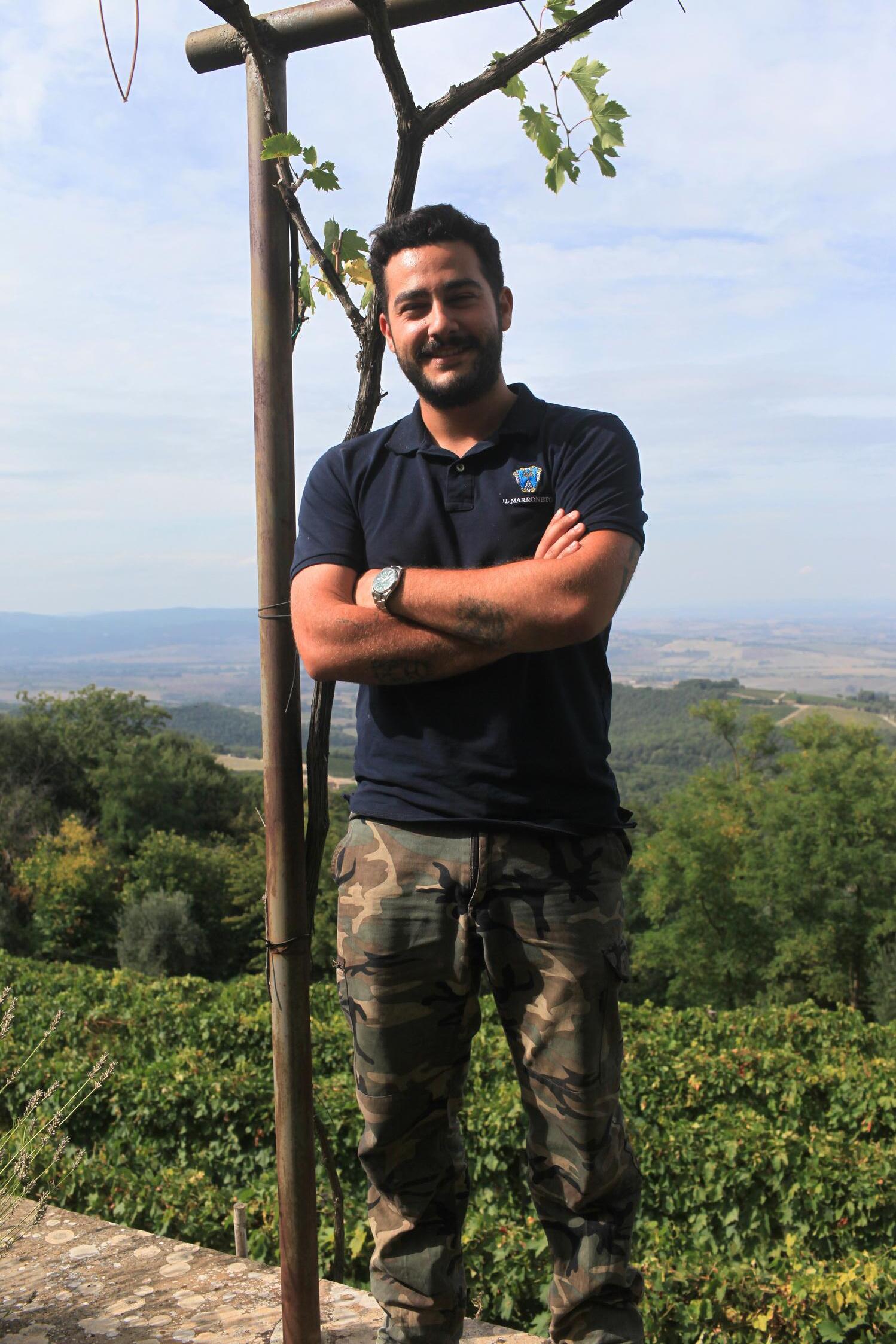

2019 & 2021 VINTAGE
EXCLUSIVE TO CORNEY & BARROW IN HONG KONG






EXCLUSIVE TO CORNEY & BARROW IN HONG KONG



On this 2nd trip to Il Marroneto for me and 3rd trip for Will Hargrove, we were to taste the new wines with Iacopo It was the second day of the harvest of vintage 2023 at the estate When we arrived, Iacopo was sitting on top of a wooden tank, doing some remontage (pumping over) of the must from the grapes harvested the day before The winery was quiet, the harvest team was in the vineyard but soon it would become chaos, so we got on with the tasting
2021 was a very hot year in which the Mori family had to deal with lack of rain for their vines, while 2019 was a near perfect year with fantastic weather conditions. In the end, we rated highly the young Rossos and the more mature Brunellos. For Iacopo, Montalcino had a run of vintages yielding high quality wines between 2019 and 2022 so he had a smile on his face while we were assessing the Il Marroneto wines.
This estate has been famous and therefore in high demand, long before we got to distribute them in Hong Kong. We are certainly grateful for the introduction to Alessandro Mori and we are determined to communicate exactly how good these wines are and to encourage you to add them to your cellar.
 THIBAUT MATHIEU Managing Director Corney & Barrow Asia
THIBAUT MATHIEU Managing Director Corney & Barrow Asia
February 2024


The Il Marronto estate arrived in the Mori family in early 1974, while Iacopo’s grandfather, Giuseppe was looking for a week-end family retreat. The house and the garden were the property of the church. The breathtaking view from the terrace, overlooking the valley and with Siena on the skyline in the distance, won him over. He decided to buy the property. There was an old vine on the estate, not cultivated for commercial purposes but to produce the wine for mass. The family kept it and tended it during their weekends. We can now say it was a holy sign!
The Il Marroneto name comes from the old chestnut dryer on the estate that was used by the nuns of the Madonna della Grazie Covent Historically chestnuts (castagne or marroni) were grinded to make flour, used in Tuscan gastronomy for local recipes ranging from savoury to sweet
It was under Alessandro’s stewardship that Il Marroneto really became a winery. He was 13 when the first vintage was bottled in 1976, he was in his 30s when he became the winemaker in charge in 1994. The first bottling of the Brunello was vintage 1980, hooking Alessandro for life.

Mario Cortevesio and his friend Giulio Gambelli, ‘THE’ two references in all things Sangiovese were very much present at the inception of this wine story They strongly advised Giuseppe and his son Alessandro to make wine at their country house having seen the potential of the Madonna della Grazie vineyard around the winery
The winery is bordering the town walls of Montalcino, up on the hillside at some 400m of altitude There is a stunning view on the valley There is just shy of 6ha of vineyards, in 3 locations and planted in stages between 1975 and 1982/83
The vines are 40+ year-old on average The soil is a mix of alluvial sediments, sand, limestone and the Tuscan galestro (a schistous & clayed stone).
The vines are trained using cordone speronato (spurred cordon) as it is traditional in Montalcino. The vine permanently keeps two canes, growing in opposite directions, from which new shoots will spring each year. The vines hold 5/6 bunches. The vineyard is autonomous, as Iacopo explained, with minimal intervention from the vineyard team. They don’t work the soil and keep natural grass. The soil is free of any chemicals or pesticides, maintained in its pristine unaltered natural condition. During the vine cycle, the team do not pluck any leaves or shorten any canes. The long branches are folded on the top of the vines, providing useful natural shade and protection against the sun that can be quite severe
Madonna della Grazie, is a 2ha vineyard, exposed north-east sitting around the winery It is named after the church at the entrance of the estate There are 4ha of vines further away The Madonna vines are at 430m of altitude and were bought by the Mori family in 1978
The Il Marroneto vineyard sits at 350m of altitude, north-west of the winery, a little lower and further in the valley You can see it from the pergola The Mori bought it in 1985

The winemaking of the Madonna wine is different from the rest of the range The juice sees two days of skin maceration before kicking off the fermentation, to extract all the colour and flavours The team favours skin cap’s aspersion, to gently extract the colour and the flavours. This is opposite to punching down the cap (called pigeage in French or Italian) which can be brutal and lead to extracting bitter aromatics, or overextraction when the berries are rich and ripe. The berries used for making Brunello Madonna della Grazie are “supercharged”.
For the Rosso, Alessandro uses bigger berries with a lower skin to juice ratio. The grapes rest for one day allowing the juice to macerate with the solids. Then the team practices daily long pumping-over, to increase extraction and bump-up the thickness and richness of the must. The skin cap is broken 3 to 4 times a day, to extract both flavours and colours.
The alcoholic fermentation is rather fast, 15 to 17 days and the maceration is not extended once the sugars have all been consumed and transformed The wine is then separated from the cap and transferred to large botti for ageing The cellar is not temperature-controlled and is exposed to the weather’s variations on two sides You can barely be more natural
The skin cap is heavily pressed; the press wine is immediately added to the fresh wine and represents about 10% of the blend Iacopo explained that using “press wine” is an ancestral practice in the region, an empiric finding Previous generations of winemakers had discovered that the press wine, more acidic than the free run juice, acted as a natural protective agent against oxidation and bacterial attack and it was beneficial for the wines intended for long ageing
The wine is left for cold settling for 2 to 3 months and is not filtered. Iacopo keeps the sediment, after racking the botti and allowing gravity to do its work. At the end of the process, they get a single barrel of clear wine back.
Absolute attention to detail and cleanliness are the motto at Il Marroneto. The large oak barrels are cleaned 3 to 4 times per year, during the élevage of the new wine, the whole process taking up to 20 man-days. This is an expensive process when you think about it, as significant quantities of wine are lost in the process. It is what it takes to make very high-quality wines.

I like this paragraph that Will wrote for the first time in the Soldera offer 3 4 years ago. We are reusing it in our Brunello brochures now, as this is very true.
“Personally, I feel the biggest missed opportunity occurs when people assume these are bold, rich wines that have to be aged for extended time
These wines are gorgeous at any stage of their evolution
Tasting from botti convinces me of that They will age exceptionally well but to not drink these wines in youth, as well as with age, is an error The Rossos do offer a real chance to get a feel for the estate but should certainly not be viewed as “Junior” A great wine is always a great wine and this is another estate that proves just that Whether to decant or not is often a personal choice I would serve from the bottle but pour early and enjoy the wine developing in the glass ”
WILL HARGROVE Associate Director and Head of Fine Wine


Dark ruby in colour, intense on the palate, the wine boasts red and black fruit aromas. The palate is ripe yet fresh and vivacious showing aromas of strawberry and juicy cherry. This is opulent for a Rosso, the tannins are well integrated, the palate is precise and energetic It evolves to a floral note at the end You will want another glass Only 6,000 bottles made
From the outlook, it is a serious wine, dark ruby coloured, with aromas of dark fruit coming out of the glass It is a fullbodied Rosso, savoury, with dark fruit and stone fruits aromas It is a concentration of wild berries and spices Fleshy and complex, it reveals a masculine side, intense but elegant The soft power of a young man This wine is the project of Alessandro’s son Iacopo He selects some fermenting casks of Madonna della Grazie wines, ages them separately and releases earlier It is somehow a young expression of the prized Madonna della Grazie vineyard 3,300 bottles made A Rosso ++
Corney & Barrow Score 18+
Recommended drinking from 2024-2028+
£220/ Case of 6 bottles, in bond UK
Instantly, you notice the difference in colour. The robe is clear ruby, demarking from the darker Rossos, the nose is pure Sangiovese, it is so characteristic. The wine is all in the length instead of brute force. There are rich aromas of red fruits, from the warm 2019 vintage, you learn the quality of the vintage from the first smell. This is a full-on wine with good tannins, complex fruit aromas dominated by cherry and ripe red stone fruits. The palate is opulent, perfumed, notes of red flowers come out as the wine take its space in the glass. There is always the Il Marroneto signature flamboyance This is an epicurean wine
Corney & Barrow Score 18-19
Recommended drinking from 2025-2031+
£420/ Case of 6 bottles, in bond UK
12
This again is dark coloured and intensely scented yet the palate is restrained, in control. Wild strawberry aromas come first, but floral notes follow rapidly The Madonna della Grazie exudes elegance This is very aristocratic, all components are in the right proportions, it is naturally grand Iacopo was telling us how the winemaking for this wine is totally hands-off because the berries coming from the vineyard are so powerful Once a wine, only beauty remains A wine touched by Grace 9,600 bottles made
Corney & Barrow Score 18+
Recommended drinking from 2024-2031+
£475/ Case of 6 bottles, in bond UK
£185/ Case of 1 magnum, in bond UK
Corney & Barrow Score 19-19 5
Recommended drinking from 2024-2039
£1,695/ Case of 6 bottles, in bond UK
£585/ Case of 1 magnum, in bond UK
£1,250/ Case of 1 double magnum, in bond UK
£2,500/ Case of 1 Jeroboam 500cl, in bond UK


